Five of the best from The Byrds
Five of the best from The Byrds
- Mr. Tambourine Man (1965) - This debut album reached #6 on the Billboard Top LPs chart and featured their hit single "Mr. Tambourine Man," which topped the Billboard Hot 100 chart.
- Turn! Turn! Turn! (1965) - Their second album peaked at #17 on the Billboard Top LPs chart and included the hit title track "Turn! Turn! Turn!," which also reached #1 on the Billboard Hot 100.
- Fifth Dimension (1966) - This album marked their foray into psychedelic rock and reached #24 on the Billboard Top LPs chart. It included the single "Eight Miles High," which peaked at #14 on the Billboard Hot 100.
- Younger Than Yesterday (1967) - Known for its innovative sound, this album peaked at #24 on the Billboard Top LPs chart. It included the singles "So You Want to Be a Rock 'n' Roll Star" and "My Back Pages," reaching #30 on the Billboard Hot 100.
- Sweetheart of the Rodeo (1968) - This album is significant for its pioneering role in the country rock genre. Although it didn't chart as high as some of their previous albums, peaking at #77 on the Billboard Top LPs chart, it has since gained critical acclaim and is considered one of their most influential works.
1. Mr. Tambourine Man (1965)
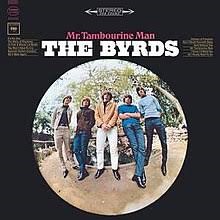
"Mr. Tambourine Man" marked a significant milestone in the evolution of folk rock. Released at the height of the mid-60s musical revolution, the album blends folk sensibilities with electric instrumentation, creating a distinctive sound that resonated with audiences. The title track, a Bob Dylan cover, became an instant classic, topping charts and introducing listeners to The Byrds' signature jangly guitar sound and intricate vocal harmonies. The album's success catapulted the band into the mainstream, influencing countless musicians and setting the stage for their subsequent releases.
Tracks like "All I Really Want to Do" and "I'll Feel a Whole Lot Better" further showcased their songwriting prowess and ability to reinterpret folk traditions through a modern lens. "Mr. Tambourine Man" remains a timeless example of 1960s folk rock, solidifying The Byrds' place in music history
2. Turn! Turn! Turn! (1965)
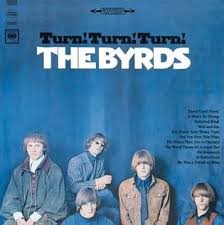
"Turn! Turn! Turn!" exemplifies their impact on 1960s rock music with its blend of folk and electric elements. Building on the success of their debut, this album features the title track, a chart-topping hit that encapsulates the band's harmonious sound and thoughtful lyrics. Released amidst the folk rock boom, the album resonated with audiences seeking meaningful music amidst social change. Tracks like "It Won't Be Wrong" and "Set You Free This Time" further showcase The Byrds' ability to fuse folk melodies with electric instrumentation, defining their distinctive style.
"Turn! Turn! Turn!" solidified The Byrds' reputation as innovators blending genres and paving the way for future rock bands. With its enduring popularity and cultural impact, this album remains a cornerstone of 1960s rock music, showcasing The Byrds' evolution and influence.
3. Fifth Dimension (1966)
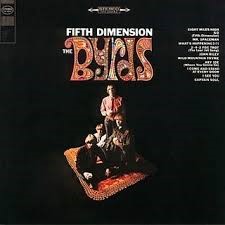
"Fifth Dimension" marked a pivotal shift towards psychedelic rock, expanding their musical horizons beyond folk influences. Known for their distinctive jangly guitars and rich vocal harmonies, the band experimented with new sounds and themes, reflecting the cultural and artistic changes of the era. Tracks like "Eight Miles High," celebrated for its innovative use of guitar effects and abstract lyrics, became a touchstone for the emerging psychedelic movement.
The album also delves into introspective themes, exploring personal and social issues with tracks such as "I See You" and "5D (Fifth Dimension)." "Fifth Dimension" showcases The Byrds' evolution as musicians and their willingness to push musical boundaries, influencing future generations of rock bands. With its blend of folk rock roots and psychedelic experimentation, the album remains a significant chapter in The Byrds' discography and a testament to their lasting impact on 1960s rock music.
4. Younger Than Yesterday (1967)
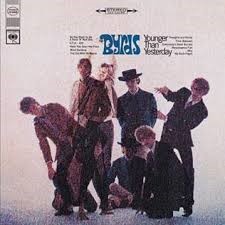
"Younger Than Yesterday" exemplifies their evolution into a pioneering force in folk rock and psychedelia. Building on their previous successes, the album showcases a matured sound with introspective lyrics and intricate musical arrangements. Tracks like "So You Want to Be a Rock 'n' Roll Star" and "My Back Pages" highlight their sharp social commentary and melodic innovations. "Younger Than Yesterday" also introduces elements of country rock, blending genres seamlessly and influencing future bands.
The album's diversity in sound and lyrical depth resonated with listeners during the cultural upheaval of the 1960s, solidifying The Byrds' reputation as musical innovators. With its enduring popularity and critical acclaim, "Younger Than Yesterday" remains a cornerstone of 1960s rock music, illustrating The Byrds' artistic growth and impact on the evolving music scene.
5. Sweetheart of the Rodeo (1968)
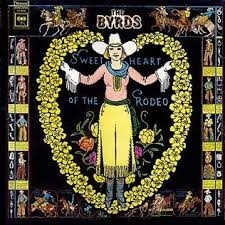
"Sweetheart of the Rodeo" marked a significant departure into the realm of country rock, showcasing their versatility and musical exploration. This album saw The Byrds embracing traditional country music influences, blending them with their signature folk rock sound. With tracks like "You Ain't Goin' Nowhere" and "Hickory Wind," the band ventured into heartfelt narratives and rustic melodies, captivating both country music aficionados and their existing fanbase.
Despite initial controversy and mixed reception, "Sweetheart of the Rodeo" has since been recognized for its pioneering role in popularizing country rock as a genre. The album's authenticity and emotional depth resonate with listeners, highlighting The Byrds' ability to adapt and innovate within the evolving musical landscape of the late 1960s. "Sweetheart of the Rodeo" remains a testament to The Byrds' influence and enduring legacy in shaping the trajectory of American rock music
Recent Posts
Queen studio albums: A Review
Phil Collins Albums Ranked & Reviewed – Complete Guide to Every Studio Album
The best of Massive Attack
Let’s Make Magic
Book Your Event DJ Now




